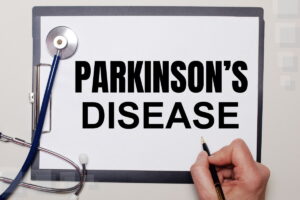

View Topics

Due to the increase in life expectancy, neurodegenerative diseases are increasingly common worldwide. The cause of neuronal death, which causes neurodegenerative diseases and leads to various neurological symptoms, primarily dementia, and impaired movement, is unknown. Symptoms in neurodegenerative diseases depend on which part of the central nervous system is affected. Modern treatment methods are symptomatic…

To understand how to treat it, let’s first figure out what Alzheimer’s disease is and how it could be treated. It’s one of the most common and serious senile illnesses. The main thing that makes this illness so complicated to treat is that it’s a complex disease that can’t be treated with one magic pill. …

Parkinsonism is a neurological syndrome characterized by rigidity (a sharp increase in muscle tone), hypokinesia (slowness of movement), and tremors of rest, expressed in the limbs’ tremors. This syndrome is formed as a result of damage to certain structures of the brain and slowly progresses. The most famous and common form of parkinsonism is Parkinson’s…

Amyotrophic lateral sclerosis is a disease characterized by damage and death of cells in the brain and spinal cord. As a result, muscle weakness and paralysis (immobility) develop. The manifestations of the disease are gradually increasing. Patients lose the ability to move independently, the activity of the muscles necessary for breathing is disrupted, which leads…

ALS is a severe neurological disease. It appears when nerve cells that are in charge of muscle fiber function are affected. As a result, muscle deterioration can affect various movements. This disorder is not confined to a specific gender, age group, or race, as it can affect individuals across diverse demographics. However, it is more…

Parkinson’s is a progressive movement disorder that affects millions of people. The condition impairs motor function and can have a profound impact on a person’s quality of life. The signs of Parkinson’s disease include tremors, bradykinesia, muscle rigidity, and postural instability. These motor manifestations result from the loss of dopamine-producing neurons in the cerebrum. Particularly…

5.8 million Americans have Alzheimer’s disease, and approximately 390,000 of them live in Texas and about 64,000 in the Greater Dallas area alone. Shockingly, Texas ranks fourth in the number of Alzheimer’s disease cases and second in the number of Alzheimer’s disease deaths. What’s more, one in every ten Americans over the age of 65 has Alzheimer’s,…